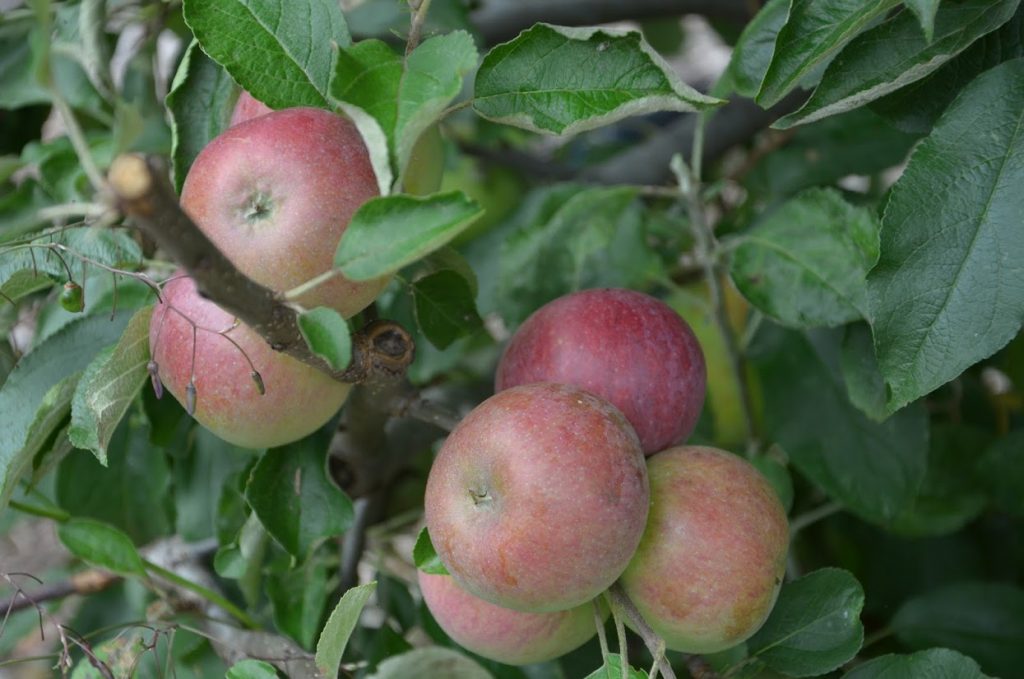
Often when we are thinking about sustainable food production, we can become focused on the annual vegetable garden, and although I believe it is an integral part of any productive backyard, I also feel that we should not neglect those perennial plants that will produce year after year.
Do you like the sound of planting something once, spending a few hours a year on maintaining that plant and it rewarding you with produce year after year?
If the answer is yes, then perennial food plants are what you need to cultivate.
Though I would never forsake my annual vegetable garden, as I love the taste of home-grown carrots, beans, potatoes and all the other annual plants I can grow, I do love the practicality and reduced workload of growing perennial food producers.
Plant once, harvest every year, year after year, with truly little input. Nothing is more sustainable than that.
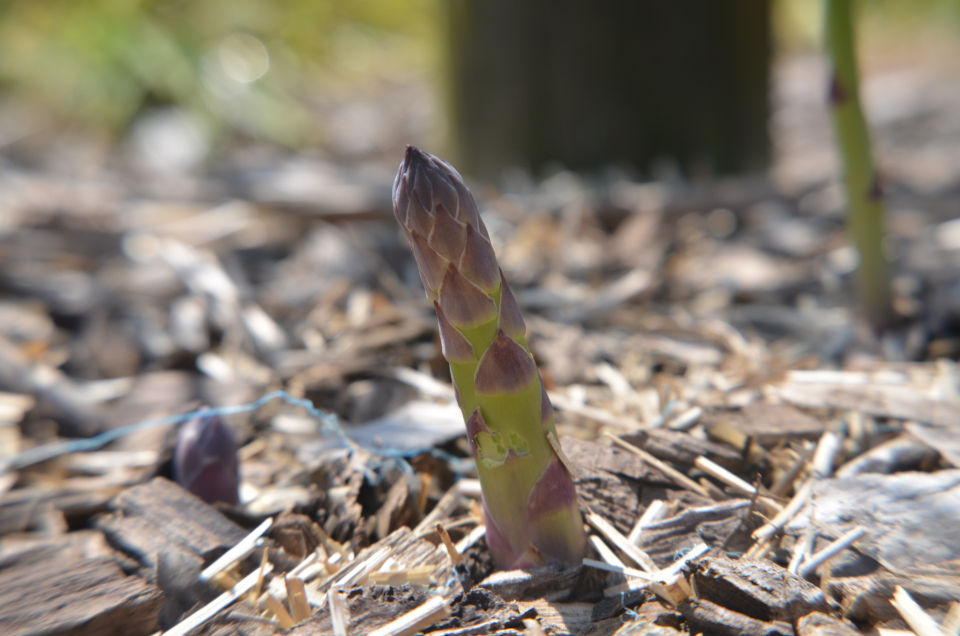
Asparagus can take a few years to establish but will crop for 20 to 30 years.
So whether you want to pick a lemon to add the juice to a salad dressing, grab an apple to eat raw or experience the joyful anticipation of picking fresh asparagus in spring, the inclusion of perennial food-producing plants in your productive backyard is a must.
Perennial plants are those that live for more than 2 years and generally produce a harvest each year.
Some of these perennials may be short-lived such as Tamarillo, which often needs to be replaced after 5 or 6 years or Thyme which will become woody and unproductive after a few years. However, there are some plants like nut trees that will go on producing for hundreds of years.
Many perennials are very easy to grow once established, they are more tolerant of drought and need less fertilising, as they have larger well-developed root systems. They generally need little more than a yearly mulching of compost and some supplementary water occasionally. Some perennials will need a bit more time and maintenance but are generally less work than the annual vegetable garden.
The greatest advantage is that they are purchased/propagated once, planted, and will produce a food crop year after year.
They can be expensive to purchase, but given a lifetime of produce, the initial expense is worth it.
The most important thing to consider when you are looking at planting perennial food plants is to plan. Remember they may (depending on the species) live and produce for 20 or 30 years – so consider where they will grow best, ensure it is space that won’t be needed for something else in the future and allow enough space for the plant to mature.
The other great thing about most perennials is that they can be incorporated into your garden in an aesthetically pleasing way. They can become part of the landscape, regardless of what type of garden you have.
With the diminishing size of backyards, it is important to have plants that look good as well as being productive.
Need a small deciduous shade tree? Why not plant an almond or an apple tree!
Need an evergreen flowing tree? Take your pick of the citrus varieties – lush green foliage, beautifully perfumed flowers, and bright coloured fruit.
Need a deciduous climber? What about grapes!
Need a ground cover? Consider delicious strawberries!
The possibilities are endless.
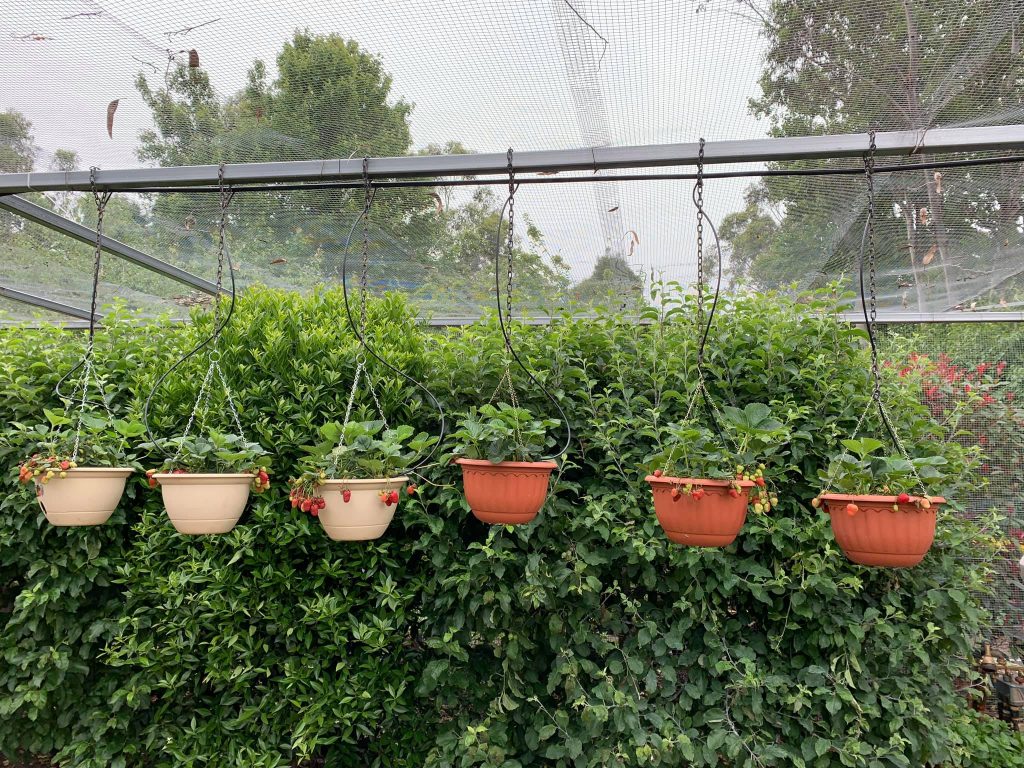



strawberries
Perennial food producers can be trees, shrubs, climbers, herbaceous perennials or ground covers and we can eat the fruit, the nut, the berry, the stems, leaves, flowers or tubers.
These include perennial vegetables, herbs (both medicinal and culinary), berry-producing plants, fruit and nut trees from temperate climates such as apples. They can be from Mediterranean climates such as citrus, figs and olives; or from tropical and subtropical climates, such as Bananas and avocado; and lets not forget to include Australian native bush tucker foods.
What and how many perennial food producing plants you plant in your backyard is a personal thing based on what food you like to eat and how you want your backyard to look.
Imagine a pergola dripping with crisp, ripe grapes or groaning under the weight of a fully laden Kiwifruit or passionfruit vine. Imagine hanging baskets full of luscious strawberries or a screening hedge of pomegranates.
For the purposes of this blog, I am going to concentrate on fruiting plants as I have covered vegetables and herbs in other blogs.
Growing herbs:
http://www.myproductivebackyard.com.au/how-to-grow-2/why-grow-your-own-organic-herbs/
Growing Perennial vegetables
Why Grow Perennial vegetables.
Here are some hints for maximising the number of perennial fruiting plants you can have in your backyard.
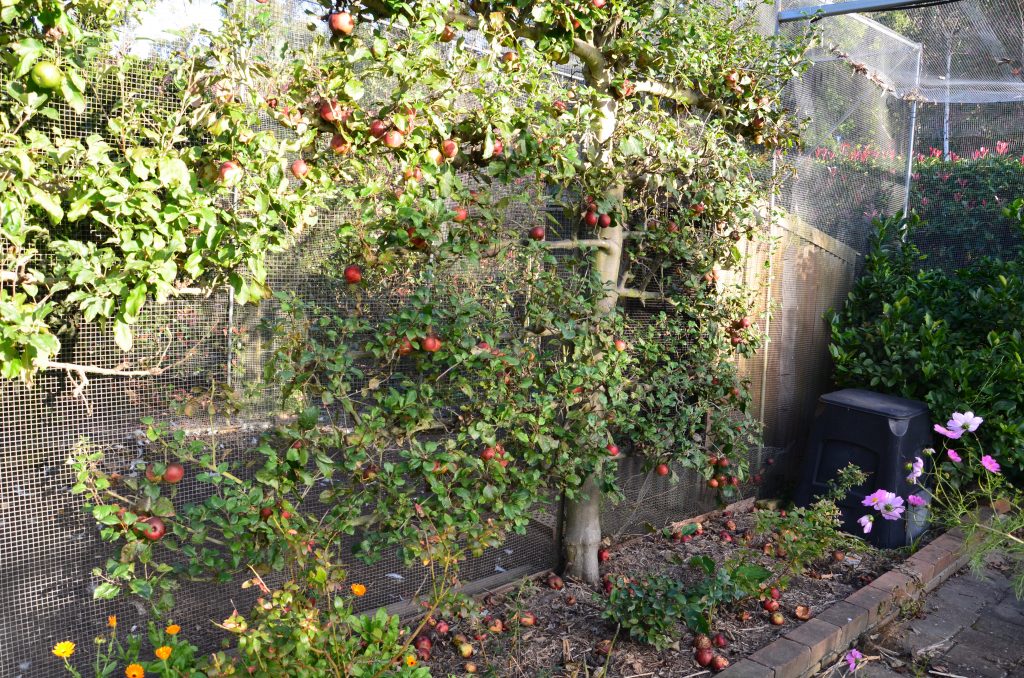



My espaliered apple trees cropping beautifully
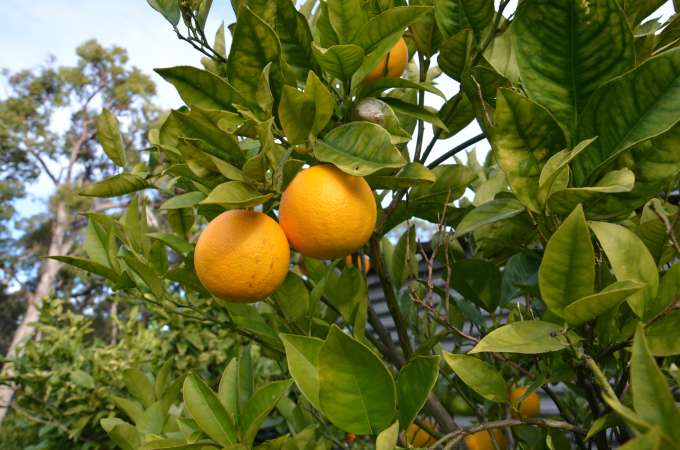

Fruit and nut trees and berry plants are often expensive so a little bit of planning can save you a lot of time, money, and effort. By working out exactly what you want to grow and what you can grow in your space is the first step in planning.
Here is an activity to go through to help you work out exactly what fruit, nut and berries you could grow.
Make a list of all the fruit, nut and berries you purchase/eat each week and those you want to grow.
For example:
Bananas, Lemons, oranges, mandarins, apples, pears, nashi pear, peaches, nectarines, strawberries, blueberries, bramble berries (blackberry, loganberry etc) and raspberries.
Now consider the following points and tick or cross out plants as you go.
Then prioritise your purchases, taking into consideration initial purchase cost and any costs for structures needed to support the plants.
Here are some further references that you might find interesting:
http://www.happyearth.com.au/
http://www.wollongong.nsw.gov.au/services/sustainability/growlocal/Documents/GROW%20LOCAL%20EDIBLE%20Gardens-web.pdf
Food from Perennial(ising) Plants in Temperate Climate Australia, for February 2013
I have found the following books useful:
‘Organic Fruit Growing’ by Annette McFarlane
Organic Gardener ‘Essential Guide to Fruit’
‘Growing Fruit in Australia’ by Paul Baxter
https://stevieraexxx.rocks/city/Discreet-apartments-in-Tel-Aviv.php says:
Very good blog post. I definitely love this website. Keep it up!
israelnightclub.com says:
Itís nearly impossible to find educated people in this particular subject, however, you seem like you know what youíre talking about! Thanks